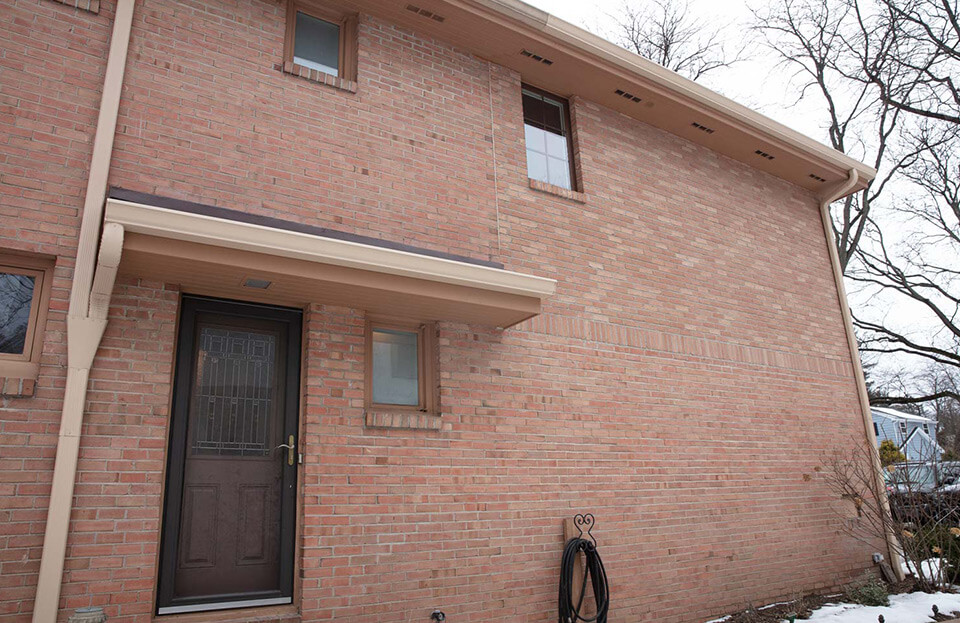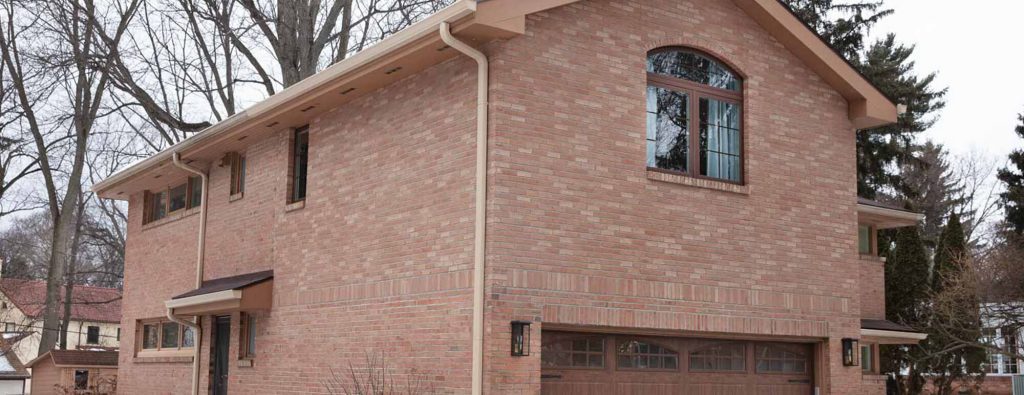Does My House Need Downspouts?
The Purpose of Downspouts
A downspout is a crucial element of your home’s gutter drainage system. While anything associated with drainage might seem like a tricky topic, the downspouts themselves are pretty simple.
Your roof collects large amounts of rainwater, and the slope of your roof directs water toward the gutter. The downspout of the gutter funnels the water downward and diverts it away from your home’s foundation. The downspout channels the water in the gutters on the sides of your house then sends it to a safe drainage area.
If your downspout isn’t working correctly, your home will likely have to deal with some unpleasant issues such as roof damage, basement leakage, foundation erosion, mold, wood rot, yard erosion, and more.
Understanding the purpose and function of a downspout, along with its proper maintenance, will help keep your home healthy and strong for a long time.

What Is a Downspout?
A downspout is the long aluminum tube which is made out of high-quality aluminum bars you see running vertically from a home’s gutters down to the ground—usually positioned at the house’s corners. When it rains, you’ll often see water gushing from the bottom end of some downspouts as it directs water from the roof and gutters to the ground.
Ideally, the downspout isn’t just channeling water down from the roof and preventing it from collecting and causing structural damage (forcing you to repair or replace it). Still, the downspout also redirects the water away from the home’s foundation and significantly reduces basement leaking.
A downspout will often have a curve at the bottom to help push the water out and away from the home’s foundation more efficiently. The effect can be enhanced by adding splash guards, trenches, and additional drainage pipes.
More than that, adding a downspout extension allows the homeowner to redirect rainwater wherever they want, not just in one fixed position. A downspout extension gives the homeowner more control, so instead of splashing and going wherever—including unwanted spaces that could lead to mold growth—the rainwater flow is calmly and purposefully channeled to where it will not cause damage.
Why an Effective Downspout Is So Essential
It’s easy to overlook downspouts, that is until you find yourself dealing with a damaged or poorly-installed one. A downspout that fails to redirect water away from your home can lead to water seeping into your foundation and creating floods in your basement or crawlspace.

Unchecked leakage can result in mold and mustiness in a short amount of time. Mold can begin to take hold in as little as two days. Furthermore, some homes with poorly-directed downspouts can suffer from yard and soil erosion. This makes a yard unsightly and messy. Grass won’t grow properly, and concrete decks and walkways may suffer, leading to costly fixes.
A downspout that fails from the gutter end of things can mean water collecting on the roof, damaging the wood, and leaking into the attic and behind walls where mold can develop.
Maintaining the Health of Your Gutters and Downspouts
Be sure to clean out gutters and downspouts regularly. Leaves and other debris can collect in gutters—particularly after heavy storms—and block rainwater’s access to the downspout. Over time, the downspout may also collect build-up and debris, which will result in water not being directed in the manner you wish.
All of this can be avoided by carefully checking your gutters and downspouts for any blockage. It’s also a good idea to make sure there are no loose or missing pieces. If you discover some structural or technical issues with your downspouts, it would be best to call in a professional to help get things sorted out properly.
Call Us Today
Questions or concerns regarding your downspouts, drain pipes, or gutters? Give us a call. At Total Quality Construction, we’re dedicated to our customers, and we take the time to listen to your needs.
